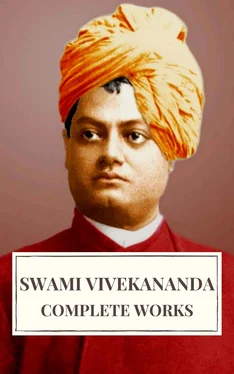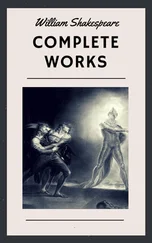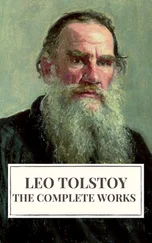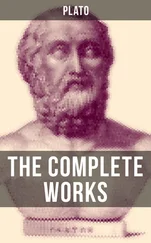( Delivered in America )
What question has been asked a greater number of times, what idea has led men more to search the universe for an answer, what question is nearer and dearer to the human heart, what question is more inseparably connected with our existence, than this one, the immortality of the human soul? It has been the theme of poets and sages, of priests and prophets; kings on the throne have discussed it, beggars in the street have dreamt of it. The best of humanity have approached it, and the worst of men have hoped for it. The interest in the theme has not died yet, nor will it die so long as human nature exists. Various answers have been presented to the world by various minds. Thousands, again, in every period of history have given up the discussion, and yet the question remains fresh as ever. Often in the turmoil and struggle of our lives we seem to forget it, but suddenly some one dies — one, perhaps, whom we loved, one near and dear to our hearts is snatched away from us — and the struggle, the din and turmoil of the world around us, cease for a moment, and the soul asks the old questions “What after this?” “What becomes of the soul?”
All human knowledge proceeds out of experience; we cannot know anything except by experience. All our reasoning is based upon generalised experience, all our knowledge is but harmonised experience. Looking around us, what do we find? A continuous change. The plant comes out of the seed, grows into the tree, completes the circle, and comes back to the seed. The animal comes, lives a certain time, dies, and completes the circle. So does man. The mountains slowly but surely crumble away, the rivers slowly but surely dry up, rains come out of the sea, and go back to the sea. Everywhere circles are being completed, birth, growth, development, and decay following each other with mathematical precision. This is our everyday experience. Inside of it all, behind all this vast mass of what we call life, of millions of forms and shapes, millions upon millions of varieties, beginning from the lowest atom to the highest spiritualised man, we find existing a certain unity. Every day we find that the wall that was thought to be dividing one thing and another is being broken down, and all matter is coming to be recognised by modern science as one substance, manifesting in different ways and in various forms; the one life that runs through all like a continuous chain, of which all these various forms represent the links, link after link, extending almost infinitely, but of the same one chain. This is what is called evolution. It is an old, old idea, as old as human society, only it is getting fresher and fresher as human knowledge is progressing. There is one thing more, which the ancients perceived, but which in modern times is not yet so clearly perceived, and that is involution. The seed is becoming the plant; a grain of sand never becomes a plant. It is the father that becomes a child; a lump of clay never becomes the child. From what does this evolution come, is the question. What was the seed? It was the same as the tree. All the possibilities of a future tree are in that seed; all the possibilities of a future man are in the little baby; all the possibilities of any future life are in the germ. What is this? The ancient philosophers of India called it involution. We find then, that every evolution presupposes an involution. Nothing can be evolved which is not already there. Here, again, modern science comes to our help. You know by mathematical reasoning that the sum total of the energy that is displayed in the universe is the same throughout. You cannot take away one atom of matter or one foot-pound of force. You cannot add to the universe one atom of matter or one foot-pound of force. As such, evolution does not come out of zero; then, where does it come from? From previous involution. The child is the man involved, and the man is the child evolved. The seed is the tree involved, and the tree is the seed evolved. All the possibilities of life are in the germ. The problem becomes a little clearer. Add to it the first idea of continuation of life. From the lowest protoplasm to the most perfect human being there is really but one life. Just as in one life we have so many various phases of expression, the protoplasm developing into the baby, the child, the young man, the old man, so, from that protoplasm up to the most perfect man we get one continuous life, one chain. This is evolution, but we have seen that each evolution presupposes an involution. The whole of this life which slowly manifests itself evolves itself from the protoplasm to the perfected human being — the Incarnation of God on earth — the whole of this series is but one life, and the whole of this manifestation must have been involved in that very protoplasm. This whole life, this very God on earth, was involved in it and slowly came out, manifesting itself slowly, slowly, slowly. The highest expression must have been there in the germ state in minute form; therefore this one force, this whole chain, is the involution of that cosmic life which is everywhere. It is this one mass of intelligence which, from the protoplasm up to the most perfected man, is slowly and slowly uncoiling itself. Not that it grows. Take off all ideas of growth from your mind. With the idea of growth is associated something coming from outside, something extraneous, which would give the lie to the truth that the Infinite which lies latent in every life is independent of all external conditions. It can never grow; It was always there, and only manifests Itself.
The effect is the cause manifested. There is no essential difference between the effect and the cause. Take this glass, for instance. There was the material, and the material plus the will of the manufacturer made the glass and these two were its causes and are present in it. In what form is the will present? As adhesion. If the force were not here, each particle would fall away. What is the effect then? It is the same as the cause, only taking; different form, a different composition. When the cause is changed and limited for a time, it becomes the effect We must remember this. Applying it to our idea of life the whole of the manifestation of this one series, from the protoplasm up to the most perfect man, must be the very same thing as cosmic life. First it got involved and became finer; and out of that fine something, which wet the cause, it has gone on evolving, manifesting itself, and becoming grosser.
But the question of immortality is not yet settled. We have seen that everything in this universe is indestructible. There is nothing new; there will be nothing new. The same series of manifestations are presenting themselves alternately like a wheel, coming up and going down. All motion in this universe is in the form of waves, successively rising and falling. Systems after systems are coming out of fine forms, evolving themselves, and taking grosser forms, again melting down, as it were, and going back to the fine forms. Again they rise out of that, evolving for a certain period and slowly going back to the cause. So with all life. Each manifestation of life is coming up and then going back again. What goes down? The form. The form breaks to pieces, but it comes up again. In one sense bodies and forms even are eternal. How? Suppose we take a number of dice and throw them, and they fall in this ratio — 6 — 5 — 3 — 4. We take the dice up and throw them again and again; there must be a time when the same numbers will come again; the same combination must come. Now each particle, each atom, that is in this universe, I take for such a die, and these are being thrown out and combined again and again. All these forms before you are one combination. Here are the forms of a glass, a table, a pitcher of water, and so forth. This is one combination; in time, it will all break. But there must come a time when exactly the same combination comes again, when you will be here, and this form will be here, this subject will be talked, and this pitcher will be here. An infinite number of times this has been, and an infinite number of times this will be repeated. Thus far with the physical forms. What do we find? That even the combination of physical forms is eternally repeated.
Читать дальше












